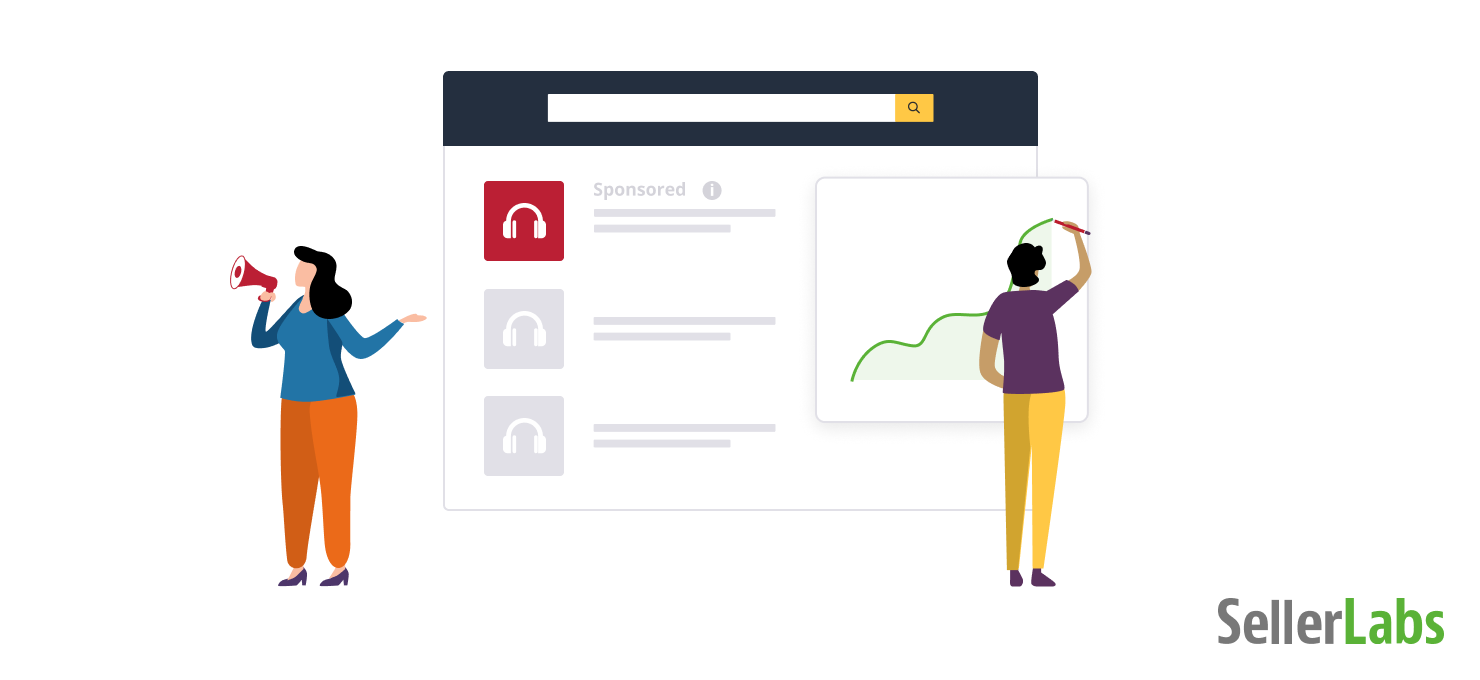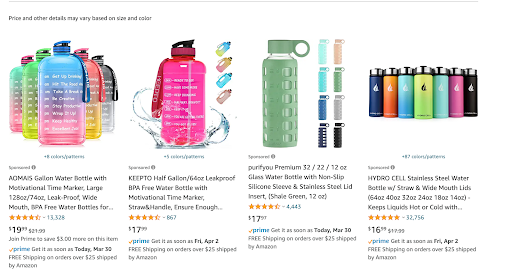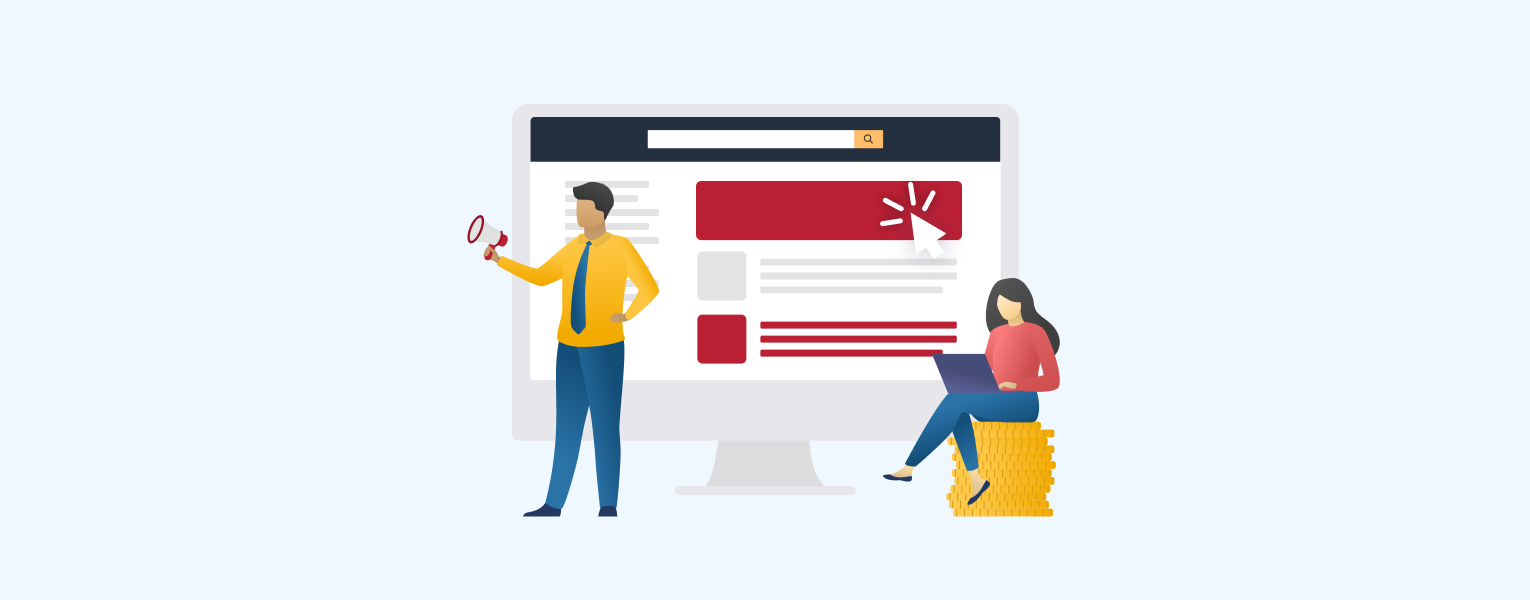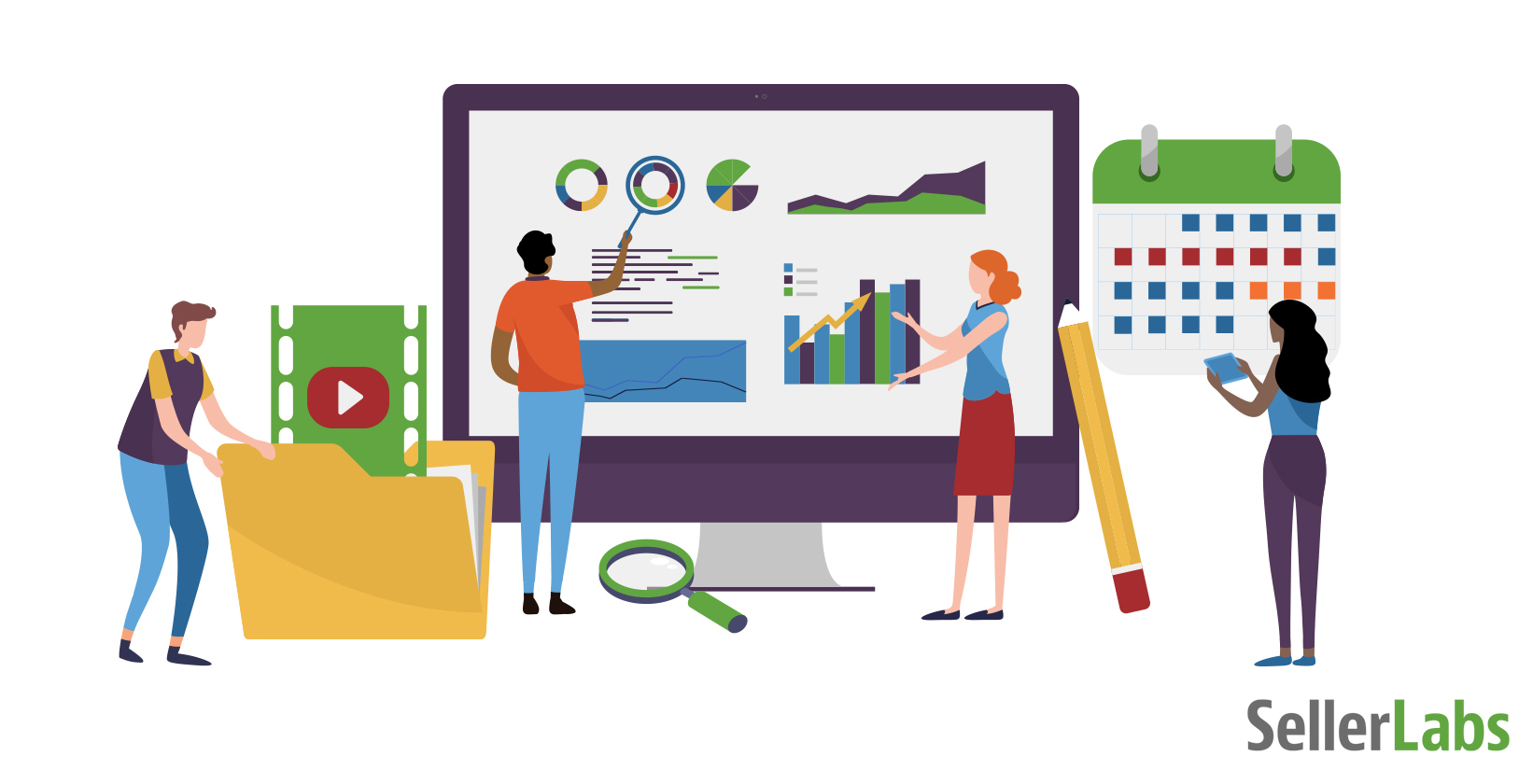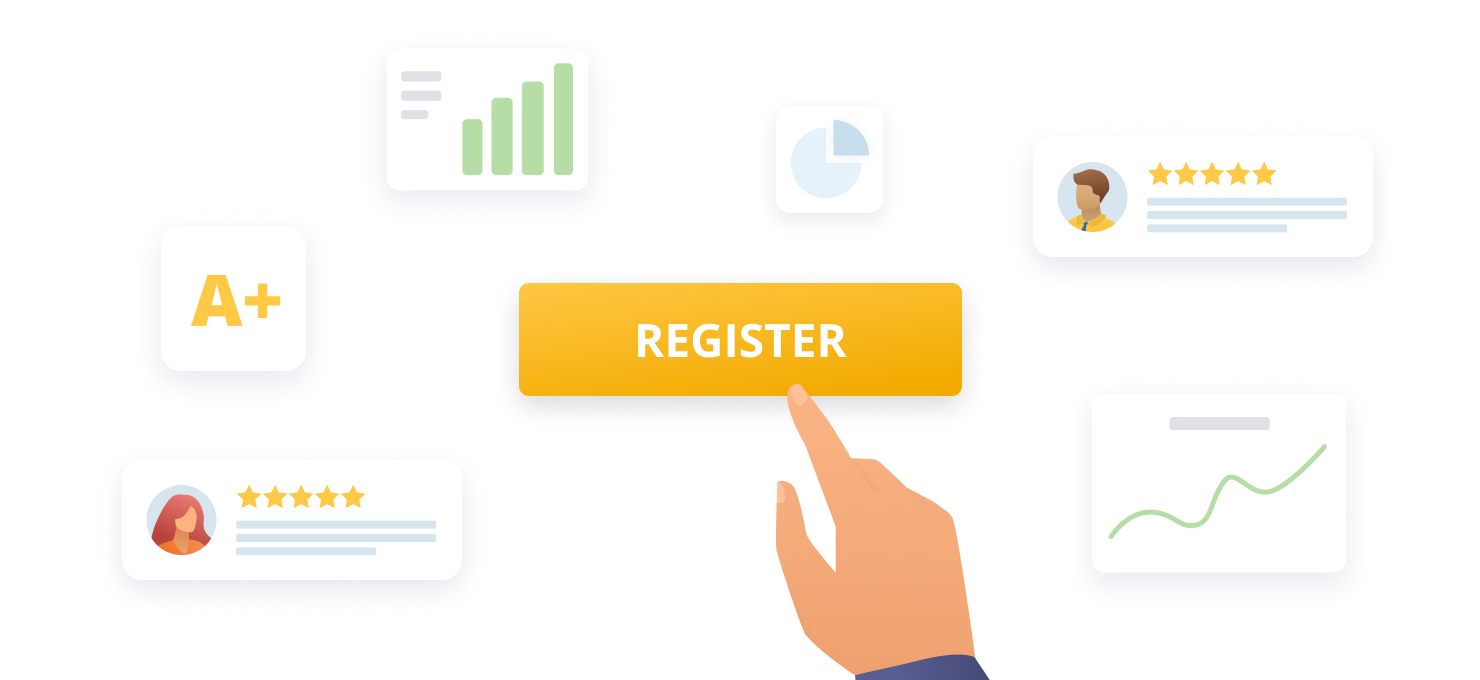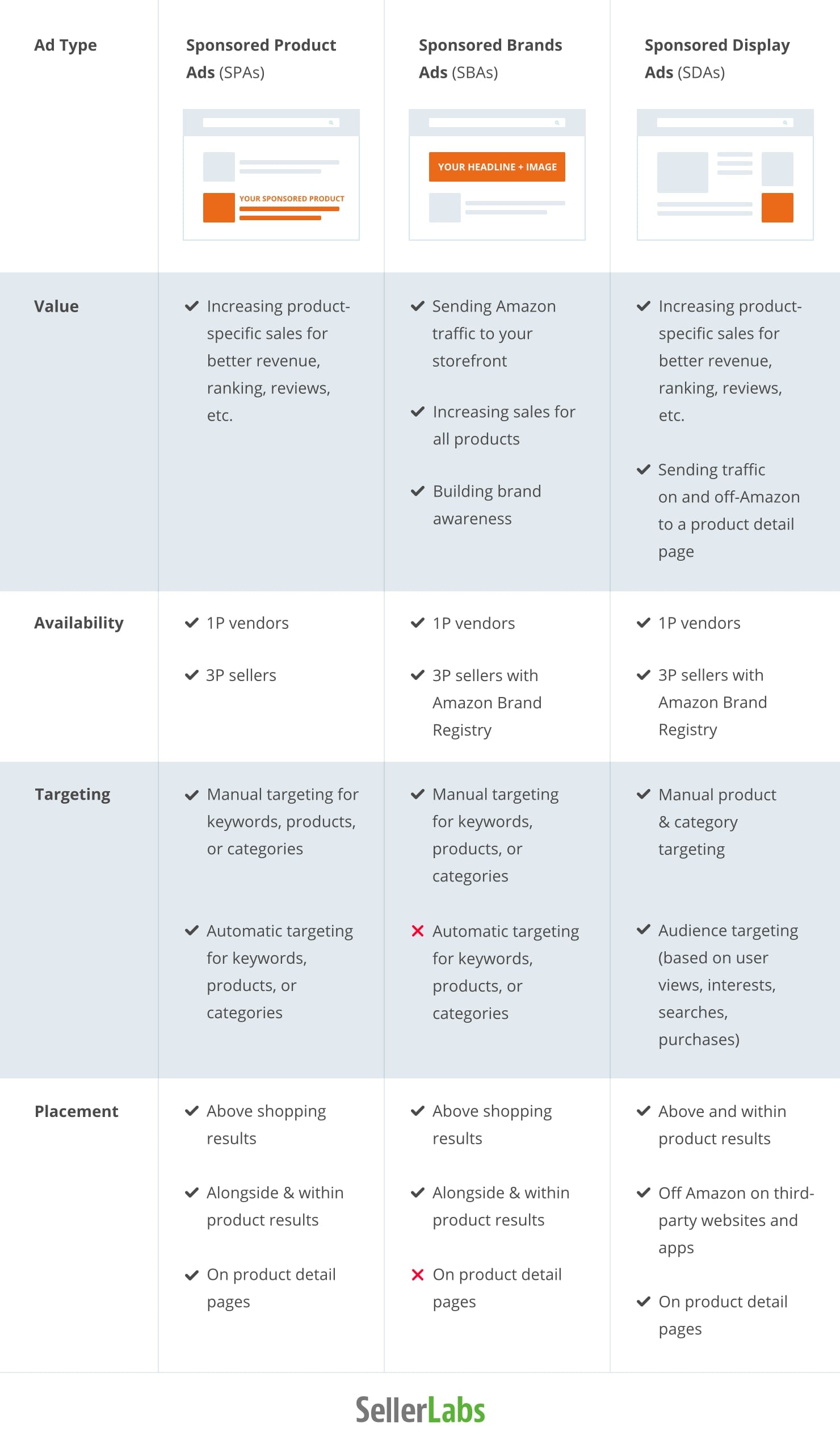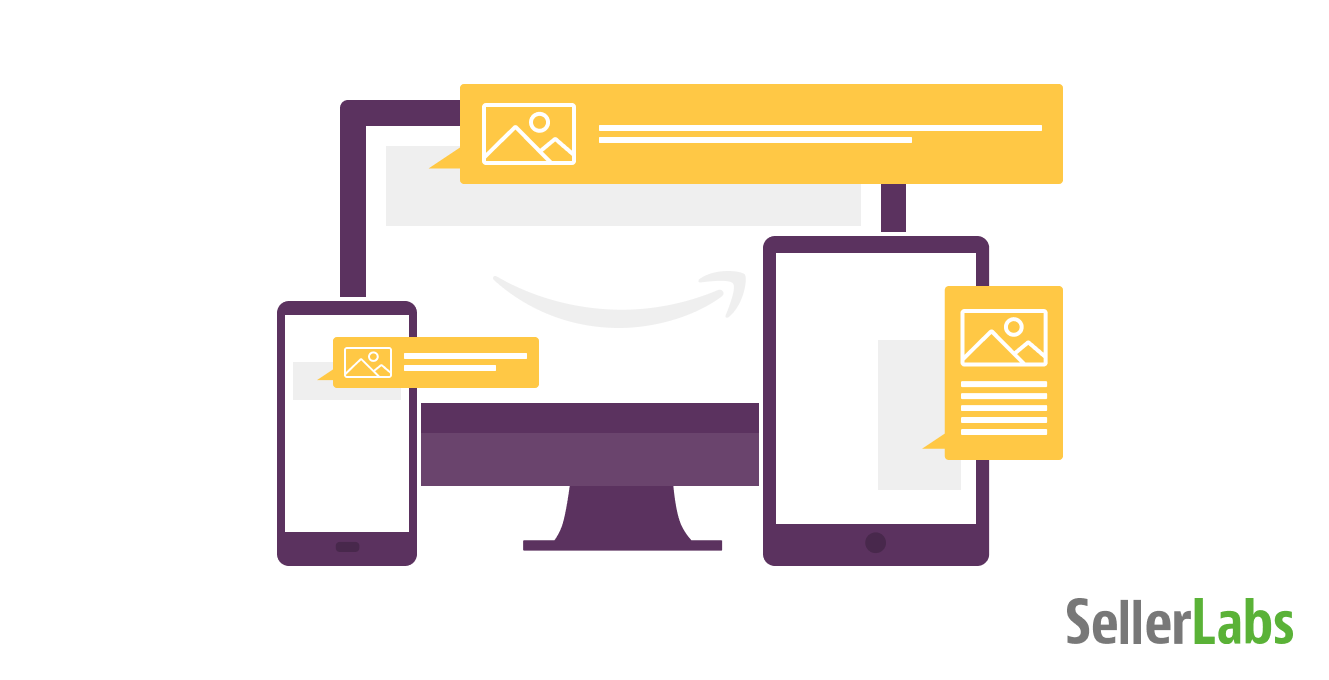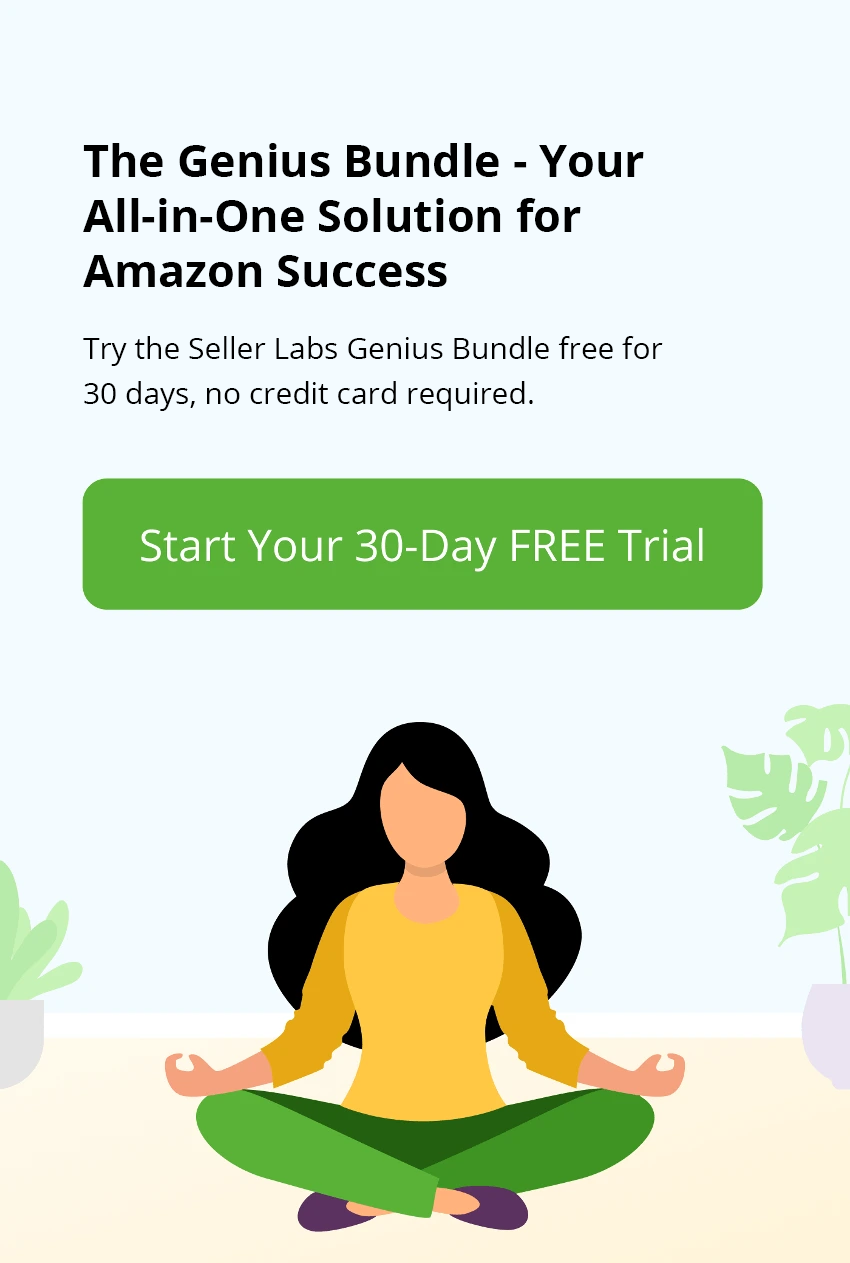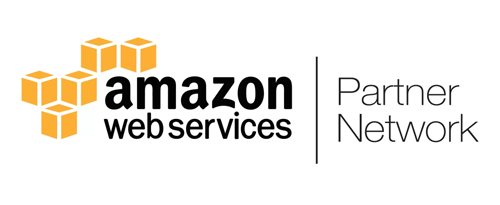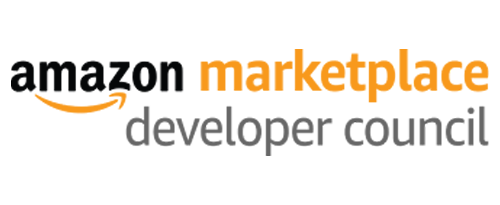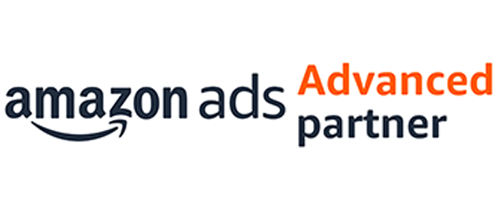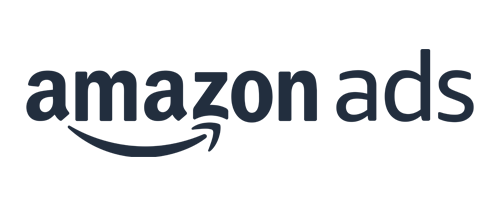Amazon Advertising is taking over. For a simple search like “water bottle,” the first four rows of results are entirely sponsored ads or other promoted items.
Really, you search for a keyword, and Amazon shows you top product results for similar keywords. That doesn’t even mention the “Editorial recommendations” that pop up as well.
Looking to Optimize Your Ads?
CHAPTER I I. What Types of Amazon Advertising Exist?
The sheer volume of advertising placements can make it impossible to learn how to advertise on Amazon, so we’re here to put your mind at ease. For more details on getting started with Amazon Advertising, read our full guide.
Amazon PPC or Sponsored Advertising is essential. Learn everything you need to know with this comprehensive guide.
Caroline Powell1. Sponsored Product Ads
This is the original and most common ad type. Whenever shoppers click on the “Sponsored” listings sprinkled in the search results, that’s a Sponsored Product Ad.
For advertisers just getting started you’ll spend most of your time on Sponsored Product Ads, be them “manual” and “auto-targeted.” These ads target customers while they’re searching for products, so the keywords and phrases you choose should mimic buyer intent.
If you compete with others on the listing for the Buy Box, you’ll only be charged for the ad when you are winning the Buy Box.
There are a few other placements that are considered Sponsored Products Ads, besides those seen in search results:
- Featured From Our Brands: The products targeted by these placements are Amazon-owned brands.
- Sponsored Products Related to Your Search: These will show in a grid-like view at the very bottom of each page of search results.
- You Might Also Like: These are primarily displayed on mobile devices when on a product listing.
- Added to Cart: Yes! There are opportunities for Sponsored Product Ads on the product detail pages and after an item has been added to a shopper’s cart.
- Thank You for Your Purchase: After a customer has placed their order, they’re redirected to a confirmation page that includes even more Sponsored Products Ads placements.
2. Sponsored Brand Ads
How else can you advertise on Amazon? With Sponsored Brand Ads, previously known as Headline Search Ads.
Sponsored Brand Ads are only available to brands who have enrolled in Amazon Brand Registry with three or more ASINs that can be advertised in the headline area. Additionally, Sponsored Brand Ads can be used by Brand Registered sellers to drive to their Amazon Storefront. If traffic is going to a Storefront, sellers need only advertise a single ASIN.
Amazon Brand Registry may be confusing to new sellers. If you own a trademarked brand, you are eligible for these protections & benefits.
Maria NavolykinaThis is one of the strongest brand awareness opportunities available to Amazon sellers. A buyer searching for “fitness” is a more casual shopper, simply browsing for items they may need for a home gym. They don’t have any brand loyalty which means that they’re looking for products with good reviews and eye-catching ads.
Even more than that, this is an opportunity for lesser-known brands to beat out larger competition. With “fitness,” you’re technically competing with FitBit, Garmin, Swell, Nalgene, Reebok, and countless others. Did any of those well known brands show up at the top of my search? No, it was a lesser known “URBNFit.”
Additionally, Amazon has added the ability to utilize Sponsored Brand Video Ads. These generally show up on page one of search results, slightly below the fold.
Brands can also capitalize on “Brands Related to Your Search.” These ad placements will link directly to a brand’s storefront, and are placed at the bottom of the search results page.
3. Sponsored Display Ads
Formerly Product Display Ads. These are also only available to those who are brand registered. Sponsored Display Ads function differently than your Sponsored Brands or Products Ads. With these, you’re targeting ASINs, categories, or varying audiences.
One of the main advantages of Sponsored Display Ads is the ability to steal traffic from your competitors. Yes, this is common amongst the other types of ads, but only these have the chance to show up on a competitor’s listing. On these competitor’s listings, you can show up below “Add to Cart” or below bullet points.
4. Demand Side Platform
The Demand Side Platform is available for brands selling both on and off Amazon. It is the only Amazon Advertising opportunity that drives traffic to your website, not your Amazon storefront or product listings.
This is extremely beneficial for driving traffic to your external landing pages. When someone lands there, you’re not concerned they’ll see a competitor’s product in the “Sponsored Products related to this item” or “What other items to customers buy after viewing this item?” sections.
These are far more targeted as you’re able to utilize data available to Amazon from millions of buyers. There are options for geo-targeting, behavior targeting, or by other interests.
CHAPTER II II. How Do You Advertise on Amazon In Practice?
There is no set formula for how to advertise on Amazon. Depending on your business’ product category and marketing goals, it’s likely you’ll need to implement a combination of all of the different advertising types Amazon has to offer.
Here’s a digest of our most asked questions concerning tactics, strategies and best practices.
No. Bid+ is useful for a hands-off approach. Bid+ gives Amazon permission to raise bids up to 50%. Bid+ doesn’t make sense if you’re not actively managing your ad spend.
The more important keywords will normally be the ones that have converted the best. These keywords will have plenty of impressions and clicks, but will also have a higher conversion rate to sales.
A “winner” keyword can be a keyword that is providing great results in your campaign. These keywords can have a lot of impressions but also have a great conversion rate, too. You can also monitor this by seeing which keywords are in you desired ACoS range.
If you have so much success and nobody is competing with you, then it makes sense to turn it off. Chances are, you have a great conversion rate and a low ACoS. So if a competitor tries to start advertising on a keyword you are winning, your conversion rate history will continue to drive a low ACoS. This means it will cost the competitor more to try and take a keyword away from you. By shutting off your ad, you are opening yourself up to risk by letting a competitor jump in and win your keyword.
If you have a campaign with a $10 daily budget and you spend your whole budget before noon, then your ads will just top showing for the day. Basically, once your budget is gone other ads will then be displayed.
In order to understand when your ads have the greatest chance of converting, you must use PPC software. Doing so manually in Seller Central using trial and error will increase ad spend, waste time, and frustrate you in the process. An all-in-one tool like Seller Labs PRO will help you execute your strategy effectively, decrease your ACos, and improve your ROAS.
CHAPTER III FAQ: Using Seller Labs Pro for Amazon Sponsored Products
Yes. We recommend running an Automatic and Manual campaign for each product you want to advertise. Seller Labs PRO will bundle the two campaigns together, though, in what’s called an “Managed Campaign”. They’re bundled that way so you can easily move bids, negative keywords, search terms, etc. between the different campaigns. This method allows sellers to aggregate data easily.
Yes. You can view user search terms within Seller Labs PRO and can set these terms as exact match keywords.
By default, Seller Labs PRO will pull in each variation of your product. This will make sure that any sale made (no matter what variation) shows on your account.
Yes. When you sign up for Seller Labs PRO, it will pull in all of your campaigns as well as 60 days of historical data from Amazon. Give it 24 hours to populate, though.
Yes. You have the ability to create a new campaign using automatic targeting and can add it to your existing managed campaign. This means that you do not need to have a separate Ignite managed campaign for both of your auto and manual campaigns.
You can import your existing campaigns and convert them into Ignite managed campaigns.
Each Seller Labs Pro subscription is determined by the number of Ignite managed campaigns you wish to have running at once.
Seller Labs PRO will evaluate campaign data from the last 60 days. Data will then start being collected by Seller Labs PRO moving forward. For example, on day one of using Seller Labs PRO you will have 60 days of historical data. The next day you will have 61 days and so forth.
It depends on your risk and money you’re willing to spend on learning. We recommend letting the confidence level to get to 75 and 80% before taking any sort of action. If you’re bound by time and money, you’ll want to take action before the confidence slider gets above 75%. Try to keep the confidence level above 40% so it’s more than a hunch. The confidence rating is based on historical data from a campaign.
You can click the “Link another Campaign” button in the “Associated Campaigns” section of your PRO campaign. You will then be able to add an existing campaign to your new PRO campaign.

